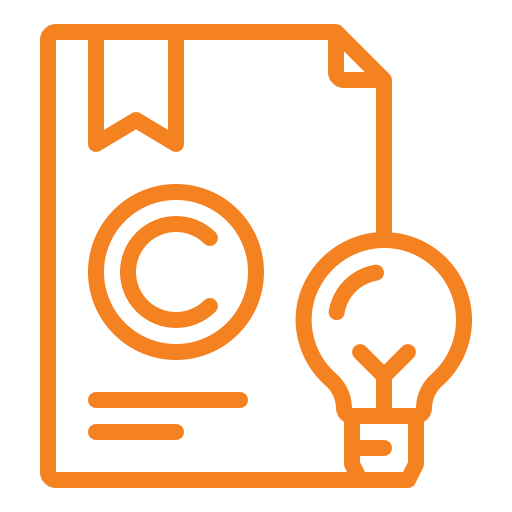Value-added IP Research
Know More About Value-added IP Research

ipMetrix's comprehensive research solution offers
- Thorough research and analysis
- Continuous research updates on areas of interest
- Insights based on knowledge gathered over the years in specific fields of expertise
- Technology platform for optimizing delivery
Today's globalized businesses need IP protection in all countries of operation. For example, a mobile manufacturer having a US market base, Chinese manufacturing facility and Indian software design center would need IP protection in all of these countries. The legal work requires cross-border collaboration.
ipMetrix's advantages to client are:
- Protect client interest
Traditional law firms drive relationships with foreign law firms based on mutual business interest and not client interest. This model is very inefficient and expensive. ipMetrix's global partner network ensures that client interest is safe-guarded.
- No hourly billing for queries over phone/e-mail
Traditional law firms charge per hour for conversations and email reviews. This model does not integrate well with internal processes of client organization. ipMetrix does not charge per hour for queries over phone or e-mail.

Core value-added IP research capabilites
Patent searching is a skill that is only acquired with experience. Our patent search strategy is cutting-edge in that we don't rely on just one or two search methods and databases. We use a comprehensive set of search tools applied on multiple databases to milk out the last possible patent that possibly can result as a prior-art. A patent search has the following components:
- Search using ECLA, IPO, WIPO classifications
- Keyword search, ECLA symbol search, IPC symbol search for better results
- Access to paid databases with advanced search tools
- Search using key inventors, companies
- Search based on forward and backward references of patents
- Non-patent literature search for prototypes and other technical documents in public domain
We provide a detailed report that provides a comprehensive overview of the state of prior-art. The report does not simply give you a stack of unrelated patents but only those that are most related to the invention. Hence, we ensure that we have understood our client's invention before doing any search.
A Patent Validity Search or Patent Invalidity Search is the process of making an exhaustive Prior Art Search conducted after patent issuance. The former aims to validate the enforceability of a patent's claims while the latter aims to invalidate one or more claims of a patent. In the event of a patent infringement, proof of invalidity based on prior art is the first line of defense. The components of this search are:
- Conventional patent prior art database search techniques
- Non-patent literature such as journals, books, academic work, product literature, and internet publications
- Prior art also includes physical embodiments of products and evidence of sale or public use
A patent office may have issued a patent by overlooking the best prior art since they are allocated an average of 12 hours per prosecution case. Hence, a more detailed invalidation search could possibly reveal a prior art that can counter a patent claim.
This is also known as product clearance search, which aims to determine whether any claims within "in-force" patents are being infringed. The search is conducted to aid companies make informed R&D; investments during product development since some features might infringe claims within "in-force" patents. This search does not require analysis of expired patents and non-patent literature. An infringement search has the following components:
- In-depth study of claims within "in-force" patents
- Claim interpretation from a legal stand-point
- Analysis of features of proposed product against broader claims of patents
- The references of this search form the basis for a legal opinion assessing the risks relating to infringement of patents and potential infringement of pending patent applications
The infringement search helps make appropriate business decision. In the event of an infringement one may perform the following:
- Perform a Patent Invalidity Search on the patent in question to nullify its enforceability
- Make changes in design of product to be out of scope of claims within the patent
- Consider licensing the technology in question
The Freedom to Operate Search is an extension of a Patent Infringement Search. It aims to determine the jurisdictions in the world where a technology may be used or protected. A patent that blocks introduction of a product in one country may not have a counterpart patent in another jurisdiction where there is commercially viability. A FTO search has the following components:
- In-depth study of claims within "in-force" patents
- In-depth analysis of expired patents and publicly available documents
- The references of this search form the basis for a legal opinion assessing the risks relating to infringement of patents and potential infringement of pending patent applications
Appropriate timing to conduct FTO search is required during product development since too early a search could prove useless when the final product has undergone many changes. Too late a search could also result in wasted R&D; expenditures if infringement is found.
This is also known as State of the Art Patent Search and is designed to research progress in a specific technical field in the broadest and most general form of all patent searches. This is a form of market survey that takes stock of everything that has already been done in a given art. Landscape analysis helps in the following ways:
- Client is contemplating entry into a particular field
- Client is currently active in a particular field and roadmap to design around the current art
- Determine solutions from exisiting patents when faced with technical problems
- Spot new competitors and to identify new technological trends
- Develop chronological understanding of the field
- Non-patent literature search for prototypes and other technical documents in public domain
We provide a detailed report that provides a comprehensive overview of the state of art.
Patent Portfolio Assessment Reports help businesses make cost-effective and timely evaluations of the strength, quality and position of portfolios. Relative position within an immediate and extended patent landscape, including insights into patent family investments and age of the patent/technology, helps in identifying licensing opportunities. Typical uses of portfolio assessment are:
- Developing an understanding of patent portfolio
- Building a comprehensive portfolio
- Identifying risks through screening of threats
- Identifying potential opportunities
- Safeguarding rights
- Generating business intelligence reports based on patent portfolio strength
Claim charts help in analyzing infringement of claims in a patent in a more detailed manner. Claim charts can help determine the extent of overlap between one or more claims of a patent and a product or technology.
Competitive Intelligence (CI) aims to provide a comprehensive understanding of competitors, suppliers and product innovations in varied regions across the world. CI is the legal and systematic collection and analysis of information about the strengths, weaknesses, and future intentions of competitors. The patent portfolio trail is analyzed to identify the following:
- Most recent patents and patent applications of companies in a particular field
- Patent sub-classifications corresponding to company�s latest patent filings
- Prolific inventors
- Technology areas where company is most active
- Regions where company usually seeks patent protection
- Expired patents
- Patents that are re-assigned to other companies or individuals
- Pending patents of company at the patent office












